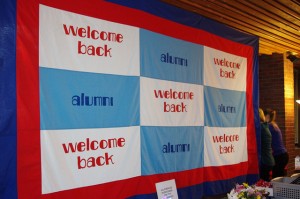The Ravages of Time
 My twenty-five year college reunion is right around the corner. In advance of the event, my classmates were asked to write a short summary of their post college life. Next to each write-up was the picture from our graduating yearbook twenty-five years ago. Many of the entries also include current pictures.
My twenty-five year college reunion is right around the corner. In advance of the event, my classmates were asked to write a short summary of their post college life. Next to each write-up was the picture from our graduating yearbook twenty-five years ago. Many of the entries also include current pictures.
Flipping casually through the book, I noticed two things. First, it is amazing how old we all look. Time really takes its toll, that’s for sure. Second, men were much more likely than women to submit pictures of what they look like now.
There was a third thing that also seemed to be true. Many of the people who were really attractive twenty-five years ago don’t look so good now. And even more interesting, there were a surprising number of people who were unattractive in college, but look great (relative to the rest of us geriatrics) now. If I had been asked to guess, I would have estimated that the correlation between attractiveness twenty-five years ago and today was zero or even negative for women. For men I would have guessed a small positive correlation.
I was so struck by the pattern that I decided to do a more systematic data analysis.
For the first 100 people who had pictures from today and twenty-five years ago, I first covered up the current pictures and rated the attractiveness of the graduation picture on a scale of 1 to 10. I then covered up the graduation picture and rated the current picture from 1 to 10. Then I computed the correlation between attractiveness then and now. Here were the results:
Correlation for men: .34 Correlation for women: .41
These correlations are lower than I would have predicted before looking at the data, but way higher than I would have guessed after having looked casually at the pictures. It is a good lesson in how bad the human brain is at making statistical inferences. My guess is that I dramatically overweighted a few cases of women turning attractive, while underweighting the bulk of the data which was less notable.
Whether these are indeed the true correlations is a different question all together, since sending in a recent picture was voluntary. I would imagine that the people who look good today were much more likely than the others to submit pictures. (In case you are wondering, I did not submit an updated picture!) Whether this “selection effect” operated equally strongly on people who were or were not attractive in college is an open question. That selection would affect the correlations I report above.
I guess there is only one way to find out: show up at my reunion, pencil and paper in hand, recording data throughout the weekend.

Comments